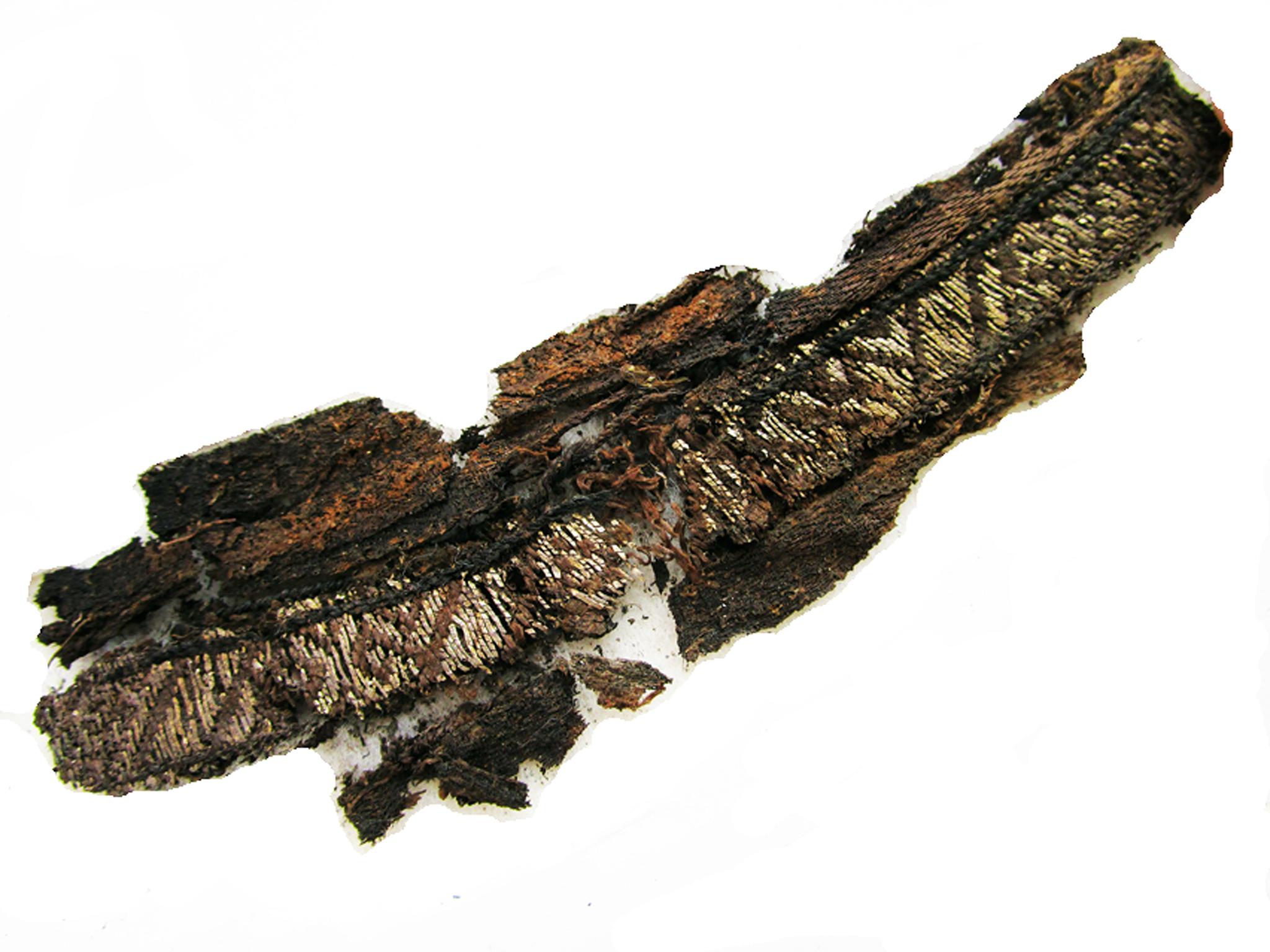Researchers find name of Allah woven into ancient Viking burial fabrics
Find suggests evidence of Islamic influence not just 'the result of plundering and eastward trade', says archaeologist

Allah's name has been found embroidered into ancient Viking burial clothes, a discovery researchers in Sweden have described as "staggering".
The silk patterns were originally thought to be ordinary Viking Age decoration but a re-examination by archaeologist Annika Larsson of Uppsala University revealed they were a geometric Kufic script.
They were found on woven bands as well as items of clothing, in two separate grave sites, suggesting that Viking funeral customs had been influenced by Islam.
The woven bands contained ancient Arabic script, Kufic characters, invoking both Allah and Ali. The Kufic characters were found in the Viking Age in mosaics on burial monuments and mausoleums, primarily in Central Asia.
“One exciting detail is that the word ‘Allah’ is depicted in mirror image," Ms Larsson said. "Perhaps this was an attempt to write prayers so that they could be read from left to right.
“That we so often maintain that Eastern objects in Viking Age graves could only be the result of plundering and eastward trade doesn’t hold up as an explanatory model, because the inscriptions appear in typical Viking Age clothing.
“It is a staggering thought that the bands, just like the costumes, [were] made west of the Muslim heartland. Presumably, Viking Age burial customs were influenced by Islam and the idea of an eternal life in paradise after death."
She added: “In the Quran, it is written that the inhabitants of paradise will wear garments of silk, which along with the text band’s inscriptions may explain the widespread occurrence of silk in Viking Age graves. The findings are equally prevalent in both men’s and women’s graves.”
Ms Larsson’s prior research has uncovered widespread use of silk during the Viking Age in Scandinavia, the university said.
The cloth is thought to have come from ancient Persia and Central Asia.
Join our commenting forum
Join thought-provoking conversations, follow other Independent readers and see their replies
Comments